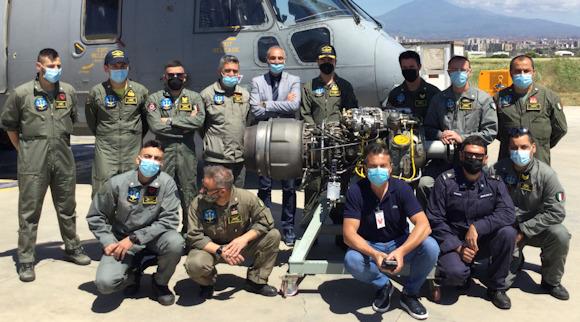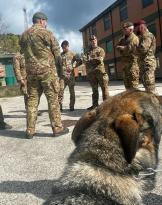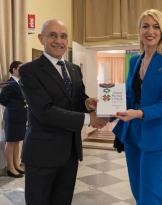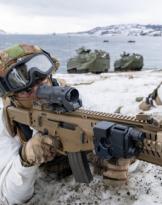Thirty-five aeronautical maintainers in service with the helicopter groups of the Air Force of the Navy and an instructor of the Courses and Internships office of the Navy helicopter station of Catania, have completed the first training course for the qualification to operate at the 2nd technical level on the turbomotors installed on the EH-101 and NH-90 helicopters of the Italian Navy.
The two courses, the first of their kind in Armed Forces for NH-90 and EH-101 helicopters, carried out at MARISTAER Grottaglie and MARISTAELI Luni and reserved for specialist personnel in "motorist" helicopters of the two flight lines, had a duration of about ten days each during which the military have acquired from the instructors of the AVIO AERO company the necessary theoretical and practical knowledge to intervene independently on all the engine modules (Cold Section, Hot Section, Power Turbine and Accessory Module).
The training ended with an examination by the company responsible for the system, which certified, in accordance with the aeronautical regulations, the acquisition of specific skills in the 2nd technical level maintenance field.
The conclusion of this training course represents an important milestone for the Air Force of the Navy as it will allow the military to operate autonomously, therefore without the need to resort to the support of private industry, on the engines of the Armed Force helicopters.
From today, the Navy will therefore be able to count on personnel qualified to carry out multiple activities on the individual engine modules and related accessories, with significant savings in terms of time and costs for the Armed Force.
The acquisition of these maintenance capabilities will allow flight groups to plan complex maintenance plans with greater flexibility and effectiveness, maximizing the efficiency levels of the Navy's Rotary Wing component.
The progress of the Armed Force in terms of maintenance of the NH-90 and EH-101 helicopter lines represents a significant step forward in the re-internalization of vital technical and logistical activities. All this in response to the growing need to always ensure adequate "maintenance autonomy" in the operational use of aircraft, even in complex scenarios far from national sources such as, for example, those characterizing the air-naval instrument in redeployment aboard naval units.












